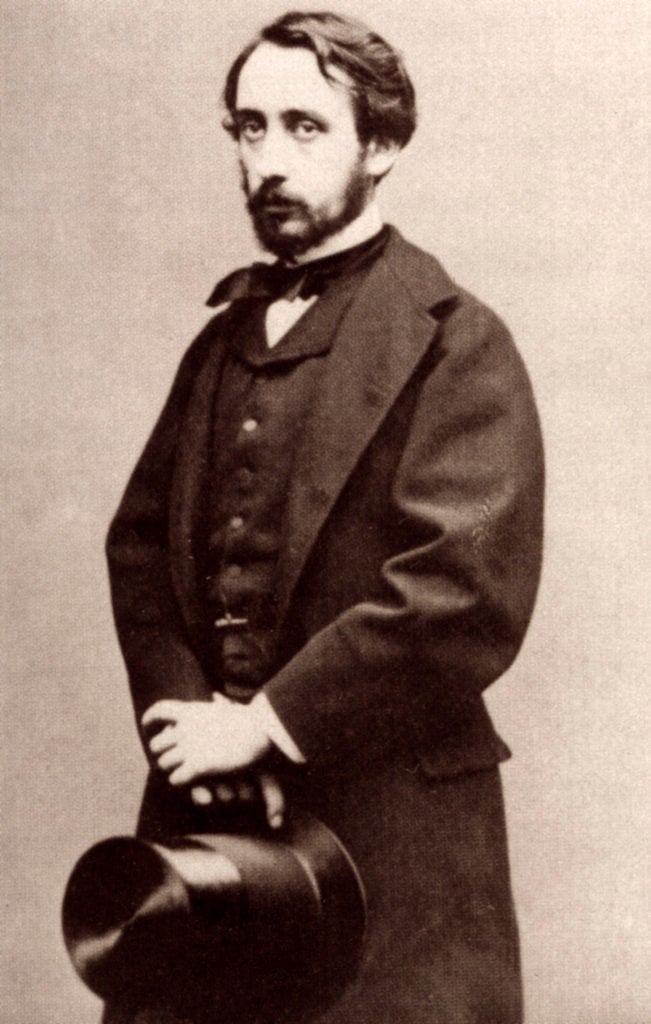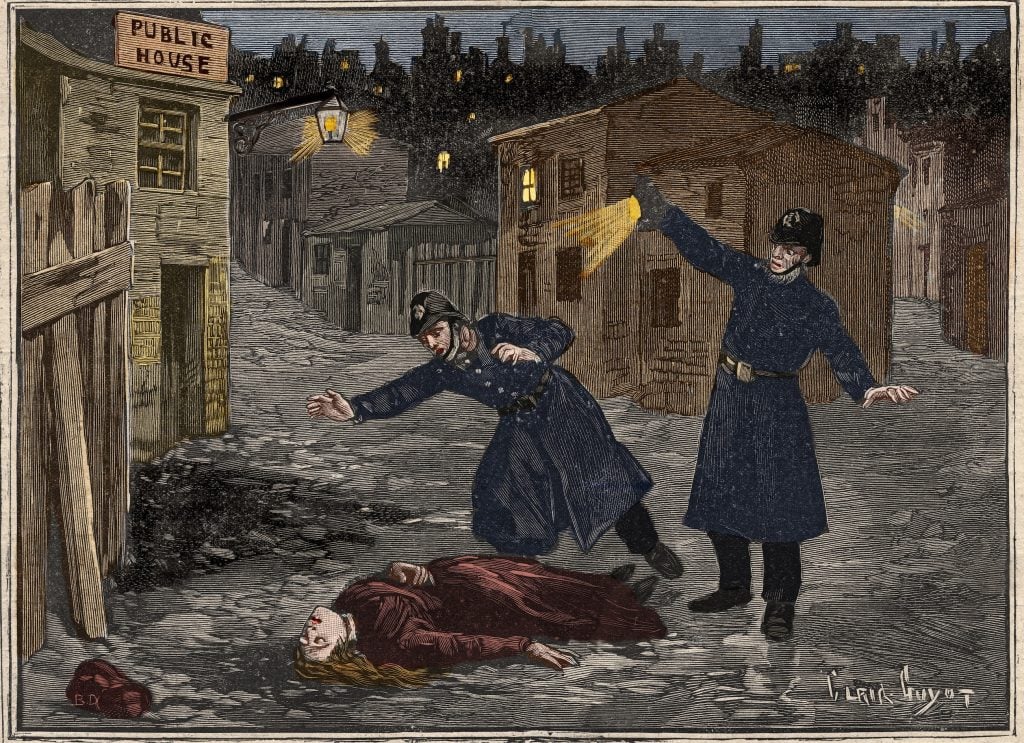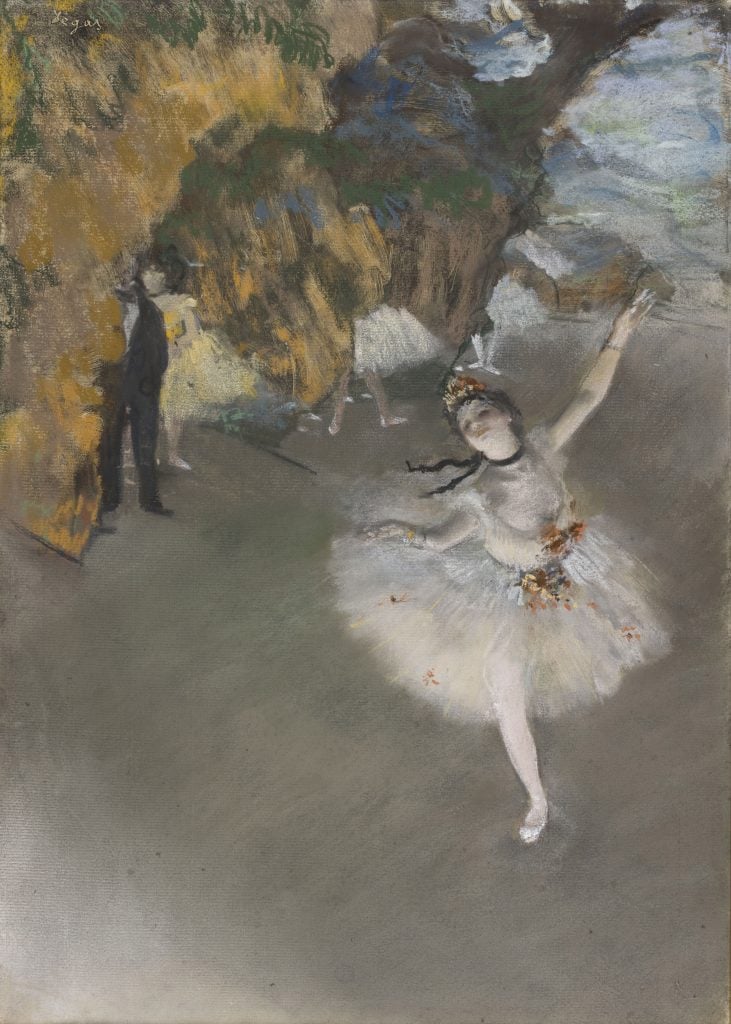Art World
Was Edgar Degas Actually Jack the Ripper? This Dogged TikToker Has a Theory
The Impressionist artist spent time in London, she pointed out, and she has always found his art a bit creepy.

The Impressionist artist spent time in London, she pointed out, and she has always found his art a bit creepy.

Brian Boucher

Sometimes art-historical breakthroughs come from unlikely sources. Kiki Schirr, a freelance marketing strategist, researcher, and occasional ghost writer based in Tennessee, has an art-historical theory that she can’t get out of her head and that she has been promoting on her popular TikTok page. In her view, the notorious serial killer known as Jack the Ripper, who committed a series of murders in 1888 London, was none other than Edgar Degas.
That’s right, the French Impressionist artist known for his paintings of ballerinas.
“Hear me out,” said Schirr in a viral seven-minute video in which she laid out her theory as she sat, clad in a denim jacket, in the passenger seat of her 2014 Hyundai Santa Fe.
“I was running a fever of 101 and on my way to the doctor’s office, which is why I kept mis-speaking,” she said in a phone conversation. “I was sitting in the parking lot and bored and I swear I hit ‘save to draft’ and it went live because my iPhone is terrible. It’s my worst video on the subject by far and is the most incoherent.”
By way of background, Jack the Ripper killed his victims, all women, in the down-at-heel Whitechapel district of London in 1888. He had the habit of slitting their throats before mutilating their bodies. It all gave rise to feverish speculation, offers of cash rewards, a media frenzy, and in-depth police investigations of 11 murders committed over three years that had some commonalities. A group of victims, known as the “canonical five,” was most likely to have fallen prey to the same killer. The murders eventually stopped, and the cases remain unsolved. More than a hundred people, including author Lewis Carroll and artist Walter Sickert, are among those speculated to have committed the crimes.
@schirrgenius♬ original sound – Kiki Schirr-Genius
So, what’s Schirr’s argument?
Jack the Ripper killed women, mostly women he mistook for sex workers, she said. The artist, born in 1834, was in his early 50s by the time of the murders and “was beginning to really hate women” and even to descend into misanthropy, partly due to encroaching blindness, she said. (“What a creature he was, that Degas!” his fellow-artist Pierre Auguste Renoir would say. “All his friends had to leave him; I was one of the last to go, but even I couldn’t stay till the end.”) Psychopaths, Schirr said, have “a dead spot in their brains right behind their eyes,” and Degas may have had the same due to possibly having Stargardt Disease, which would nearly rob him of his sight. (“I expect to remain in the ranks of the infirm,” he told a friend, “until I pass into the ranks of the blind.”)
Sure, he lived in Paris, but he often visited friends in London, she added, including fellow-artist James McNeill Whistler.
Did he have an alibi? That’s actually how her questions started. He supposedly traveled to the South of France at the time of two of the murders and sent a barrage of mail from his hotel, some of the letters to people he did not normally correspond with, including society columnists who would be likely to quote him. Schirr suspects the hotel may have mailed the letters for him in order to create a fake paper trail.

A street in Whitechapel: the last crime of Jack the Ripper, from Le Petit Parisien (1891). Photo: Stefano Bianchetti/Corbis via Getty Images.
“In the years 1880–1887, Degas averaged around 24 letters, two per month,” she said. “During the three weeks in Cauterets that spanned August 24 to September 15, the bodies of Mary Ann Nichols and Annie Chapman were discovered, slain, in London. The dates on those murders were August 30 and September 7. The Hotel de France in Cauterets mailed letters from Degas that were dated between August 24 and the 14. Three were dated the 30th, one was dated the 31st, two were dated on the 6th.
“These numbers,” she said, “are what first made me suspicious.”
Then there’s the anti-Semitism issue. Two of the canonical murders took place on the same night, she said, and the killer may have tried to pin them on Jewish people, leaving behind a graffito that read, “the Jews are the men who will not be blamed for nothing”—not normal English syntax. Moreover, the word “Jews” was not spelled conventionally, but rather “Juwes,” a misspelling which some take to be likely by a speaker of French, which spells the word juifs. And the words were written in chalk, which the pastel-loving artist would have carried with him. What’s more, Degas was “a notorious anti-Semite,” she said, as would become clear during the Dreyfus Affair, in which the French Jewish Captain Alfred Dreyfus was convicted of treason and later exonerated in a case that would bitterly divide French society.
As for the murderer’s choice of victims, it aligns with the artist’s choice of subjects: while Jack the Ripper may have singled out women he thought to be sex workers, ballerinas, too, were often assumed to be “women of the night.” Finally, she found some of his faceless ballerinas to be just too eerie, and the ribbons that sometimes adorn the necks of his subjects to be a little too close to the slashes of the necks of the murderer’s victims.
“Did this artist get away with murder?” Schirr asked in her video. “Did he steal organs? Did he perhaps put them in his wax sculptures—wax, the medium often used to preserve organs at the time? We’ve X-rayed some of them and found that they contain ‘organic material.’ The pretty paintings of ballerinas that hang in little girls’ rooms to this day—were they painted by a murderer?”

Edgar Degas, L’Étoile (1878). Photo: Fine Art Images/Heritage Images/Getty Images.
On the phone, Schirr explained that this whole project started in 2020. Like so many at that moment, she was fascinated with conspiracy theories. Then, she was looking at one of her own old paintings, which was based on Degas’s imagery and into which she had inserted zombie ballerinas. And hey, presto, the idea occurred to her: what if Degas and the Ripper were one and the same?
“I’m not a true crime fan like most Jack the Ripper fans,” she said. “I didn’t even know the dates. But sure enough the dates overlapped. I thought, ‘This is a fun little theory, but I better prove it wrong to myself.’ But I kept finding more and more annoying coincidences.”
With the funds that TikTok is sending her based on the video’s success, she said, she’s ordering more books on Degas.
Asked why she supposes people are so drawn to mysterious and gory tales like that of Jack the Ripper, Schirr is philosophical.
“I think people don’t like the idea that it’s impossible to know something,” she said. “We have a world that relies so much on science today that a question mark. The possibility that something might always be unknown really bothers the mind, especially murders as disturbing as those were.”
And, she thinks, it’s partly defensive on the part of potential targets.
“Women are drawn to true crime,” she said, “in order to avoid becoming one of the victims.”